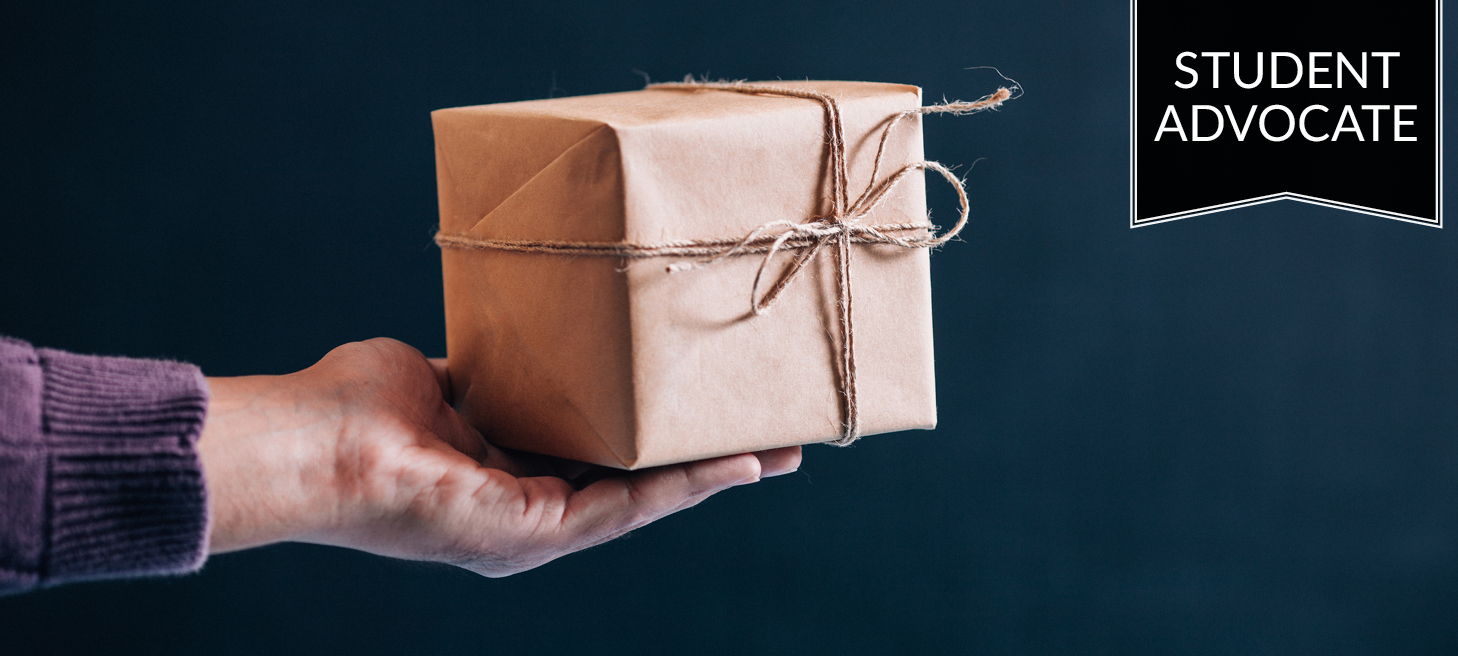How to talk to students about sexting
Sexting—digitally sharing sexually explicit messages or pictures—has become a common part of young people’s lives. While estimates of the prevalence of sexting vary, a study involving 1,650 first-year undergraduates at a large southeastern college found that 65 percent of the students had sent at least one sext to a current or potential partner.
Despite worries among many adults, sexting can be a healthy part of a sexual encounter. However, like any sexual interaction, it carries risks. Because sexting has become such a common phenomenon and one in which many young people report having positive experiences, it’s important that we adopt a harm-reduction strategy to help students mitigate the risks.
Here’s how you can help develop productive conversations about sexting:
1. Talk about it.
Acknowledge that students may decide to sext. Even if students aren’t planning on sexting themselves, it’s useful for them to reflect on how they might support a friend or handle an unsolicited message in their inbox.
2. Create a non-judgmental space.
Avoid using excessive fear tactics. Focusing exclusively on the risks of sexting can increase shame and victim blame, decreasing the likelihood that people who receive unwanted sexts or who have their image shared without their consent will seek help. Assume a non-judgmental attitude and invite students to reflect on ways they can minimize the risks of their sexual choices.
For example:
- Suggest that students talk to the person they’re messaging with about what types of messages they’re both comfortable with (e.g., they could agree to only send sexy messages instead of images).
- If they decide to send images, recommend that they leave out their faces or identifying marks such as tattoos or birthmarks.
- Stress the importance of maintaining privacy and respect by never sharing or forwarding sexts to others.
3. Broaden the conversation.
Sexting is just one piece of the broader campus culture surrounding sexuality. Give students opportunities to reflect on their core values and to consider ways to live out these values in all areas of their lives.
When explicit images are shared
If you learn that sexual images of a student were shared without their consent, offer the student support. This is a serious violation of trust, and—depending on the specific circumstances—may constitute sexual harassment and may be a crime. Refer students to university counseling resources, as well as to Title IX coordinators.
“Title IX coordinators are available to talk confidentially to any student who has concerns about an uncomfortable situation or experience,” says Ksenia Sidorenko, Title IX coordinator at Yale College in Connecticut. “Students can come to a Title IX coordinator to let them know of problems or behaviors that need to be addressed, to access support resources, or to learn more about the options for filing a complaint of sexual misconduct. Title IX coordinators can also help arrange accommodations and practical remedies—things like academic extensions, changes in class schedules, alternate housing arrangements, and no-contact agreements between students who want to avoid further interactions. They’re here to assist and support students based on the students’ needs.”
[school_resource sh101resources=’no’ category='[school_resource sh101resources=’no’ category=’healthservices,wellnesspromotion,studentservices,titleix,studentlife’]GET HELP OR FIND OUT MORE
If you are experiencing an issue with online harassment or stalking on campus,
your university’s Title IX coordinator or a representative of the campus counseling center can help.
Someone asking you for a nude pic? Send this instead: Fight The New Drug
Article sources
Marla Eisenberg, ScD, MPH, associate professor and director of research, Division of General Pediatrics and Adolescent Health, University of Minnesota.
Holly Moses, PhD, MSHE, CHES, instructor, academic advisor, and internship program, coordinator in the Department of Health Education and Behavior, University of Florida.
Ksenia Sidorenko, PhD, deputy Title IX coordinator for Yale College, Yale University.
Albury, K., Hasinoff, A. A., & Senft, T. (2017). From media abstinence to media production: Sexting, young people and education. In The Palgrave Handbook of Sexuality Education (pp. 527–545). London: Palgrave Macmillan.
Burkett, M. (2015). Sex(t) talk: A qualitative analysis of young adults’ negotiations of the pleasures and perils of sexting. Sexuality & Culture, 19(4), 835–863.
End Revenge Porn campaign. (2016). 26 states have revenge porn laws. Retrieved from http://www.endrevengeporn.org/revenge-porn-laws/
Hinduja, S., & Patchin, J. W. (2015, January). State sexting laws: A brief review of state sexting laws and policies. Retrieved from http://cyberbullying.us/state-sexting-laws.pdf
Knowledge Networks. (2009, September 23). Digital abuse survey. Retrieved from http://www.athinline.org/MTV-AP_Digital_Abuse_Study_Full.pdf
Lee, M., & Crofts, T. (2015). Gender, pressure, coercion and pleasure: Untangling motivations for sexting between young people. British Journal of Criminology, 55(3), 454–473.
Lounsbury, K., Mitchell, K. J., & Finkelhor, D. (2011, April 29). The true prevalence of sexting. Retrieved from http://www.unh.edu/ccrc/pdf/Sexting%20Fact%20Sheet%204_29_11.pdf
Madigan, S., Ly, A., Rash, C. L., Van Ouytsel, J., et al. (2018). Prevalence of multiple forms of sexting behavior among youth: A systematic review and meta-analysis. JAMA Pediatrics, 172(4), 327–335.
Meyer, M. I. (2016). Let’s talk about sext: Gendered millennial perceptions of sexting in a cyborg society (Doctoral dissertation, University of Cape Town).
Renfrow, D. G., & Rollo, E. A. (2014). Sexting on campus: Minimizing perceived risks and neutralizing behaviors. Deviant Behavior, 35(11), 903–920.
CampusWell survey, June 2015, August 2018.
Temple, J. R., Paul, J. A., van den Berg, P., Le, V. D., et al. (2012). Teen sexting and its association with sexual behaviors. Archives of Pediatrics & Adolescent Medicine, 166(9). Retrieved from http://www.ncbi.nlm.nih.gov/pmc/articles/PMC3626288/
Thomas, A. G., & Cauffman, E. (2014). Youth sexting as child pornography? Developmental science supports less harsh sanctions for juvenile sexters. New Criminal Law Review: An International and Interdisciplinary Journal, 17(4). Retrieved from http://www.jstor.org/stable/10.1525/nclr.2014.17.4.631?origin=JSTOR-pdf
Thomas, S. E. (2018). “What should I do?”: Young women’s reported dilemmas with nude photographs. Sexuality Research and Social Policy, 15(2), 192–207.
Winkelman, S. B., Smith, K. V., Brinkley, J., & Knox, D. (2014). Sexting on the college campus. Electronic Journal of Human Sexuality, 17.
















